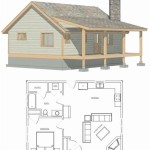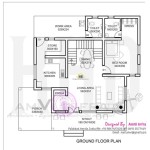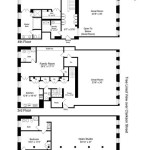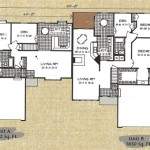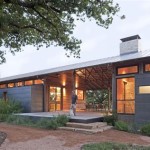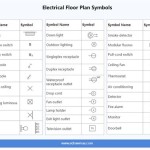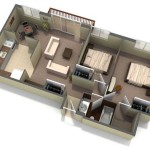Wood Duck House Plans: A Comprehensive Guide to Construction and Installation
Wood ducks, known for their striking iridescent plumage and fascinating nesting habits, are a welcome sight in wetland environments. However, habitat loss and competition for natural cavities have made providing artificial nesting structures increasingly important for their conservation. Constructing and installing wood duck houses can significantly enhance their breeding success. This article provides a detailed guide to wood duck house plans, encompassing various designs, material considerations, construction techniques, and crucial placement strategies.
The primary purpose of a wood duck house is to mimic a natural tree cavity, offering a secure and sheltered location for nesting and raising young. Wood ducks typically prefer cavities that are relatively dark, dry, and predator-resistant. A well-designed and properly placed wood duck house can meet these requirements, becoming an attractive nesting site for these beautiful waterfowl.
Selecting the Right Wood Duck House Plan
Several different wood duck house plans are available, each with its own advantages and disadvantages. The choice of plan should depend on factors such as available materials, construction skill level, and the specific characteristics of the intended habitat. Common wood duck house designs can be categorized based on shape and material.
One of the most prevalent designs is the traditional rectangular box, constructed from untreated lumber. This design is relatively simple to build, requiring basic carpentry skills and readily available materials. The dimensions of the box are crucial for accommodating a wood duck hen and her brood. Typically, the interior floor space should be at least 10 inches by 10 inches, with an overall height of 24 inches to 30 inches. The entrance hole, ideally an oval or round shape, should be between 3 inches and 4 inches in diameter, positioned approximately 4 inches below the top of the box. This placement helps prevent predators from reaching into the nest.
Another popular option is a cylindrical wood duck house, often fashioned from a section of a large log or repurposed barrel. This design closely resembles a natural tree cavity and can be particularly appealing to wood ducks. When using a log section, ensure it is properly hollowed out and sealed to prevent excessive moisture penetration. Similarly, if using a barrel, ensure it is thoroughly cleaned and free of any harmful residues.
Beyond the basic shape, several variations exist within each design category. Some plans incorporate a sloping roof to facilitate water runoff, while others include a hinged side or bottom for easy cleaning and maintenance. Certain designs also feature a predator guard, such as a metal cone or collar installed around the mounting pole, to deter climbing animals like raccoons and snakes.
Regardless of the specific plan chosen, it is essential to use durable, weather-resistant materials. Untreated lumber, such as cedar, redwood, or rough-sawn pine, is generally preferred. Avoid using treated lumber, as the chemicals can be harmful to wood ducks. Also, consider the longevity of the chosen material. While plywood can be used, it tends to deteriorate faster than solid wood, especially in damp environments. The thickness of the wood should be at least ¾ inch to provide adequate insulation and structural integrity.
Detailed Construction Techniques
Once a wood duck house plan is selected, the next step is to gather the necessary materials and tools. This typically includes lumber, nails or screws, a saw, a drill, a measuring tape, and a pencil. Ensure all materials are properly prepped before assembly. Lumber should be cut to the appropriate dimensions according to the chosen plan. Pilot holes should be drilled before driving in nails or screws to prevent the wood from splitting.
The construction process typically begins with assembling the sides, bottom, and top of the box. Ensure that all joints are securely fastened and that the box is square and level. If using screws, countersink them slightly to prevent injury to the wood ducks. The roof should be attached in a way that allows for easy access for cleaning. A hinged roof or side panel is ideal for this purpose. Secure the hinge with sturdy screws and ensure it opens and closes smoothly.
A crucial element of any wood duck house is the entrance hole. The size and shape of the hole are critical for attracting wood ducks while deterring larger predators. A 3-inch to 4-inch diameter round or oval hole is generally recommended. The hole should be positioned approximately 4 inches below the top of the box. To further enhance accessibility for the ducks, provide a textured surface below the entrance hole. This can be achieved by attaching a small piece of hardware cloth or creating grooves in the wood with a saw or chisel. This textured surface gives the ducklings a better grip when exiting the nest.
Inside the wood duck house, provide a layer of nesting material. This can consist of wood shavings, dried leaves, or straw. The nesting material should be about 4 inches to 6 inches deep, providing a comfortable and insulating substrate for the eggs. Avoid using materials like hay or grass clippings, as they can become moldy and potentially harm the ducklings.
Finally, consider adding a predator guard to the wood duck house. This can be in the form of a metal cone or collar placed around the mounting pole. The predator guard should be large enough to prevent raccoons, snakes, and other climbing animals from reaching the nest. Ensure the predator guard is securely attached and regularly inspected for damage.
Optimal Placement and Installation Strategies
The effectiveness of a wood duck house depends heavily on its placement and installation. Selecting a suitable location and mounting the house correctly can significantly increase its attractiveness to wood ducks. Ideal locations are near wetlands, lakes, ponds, or slow-moving streams. Wood ducks prefer areas with abundant vegetation for foraging and cover. The house should be placed within 100 feet of the water's edge, preferably in a location that receives partial sunlight but is also sheltered from strong winds.
Two common mounting methods are available: pole mounting and tree mounting. Pole mounting is generally preferred, as it allows for greater control over the house's orientation and height. A sturdy metal pole, at least 8 feet long, should be driven into the ground to a depth of at least 2 feet. The wood duck house can then be attached to the pole using brackets or straps. The bottom of the house should be approximately 4 feet to 6 feet above the water or ground level. This height provides ample protection from predators while still being accessible to the ducks.
Tree mounting is an alternative when pole mounting is not feasible. When mounting to a tree, select a tree that is near the water's edge and has a relatively smooth trunk. Avoid trees with dense branches that could obstruct the entrance hole. Secure the wood duck house to the tree using wire or straps, ensuring that the house is stable and level. Avoid using nails or screws to attach the house directly to the tree, as this can damage the tree and make future removal difficult.
Regardless of the mounting method, the wood duck house should be oriented so that the entrance hole faces away from prevailing winds. This helps to prevent rain and snow from entering the house. It is also important to clear any vegetation that could obstruct the entrance hole. Regularly inspect the wood duck house and surrounding area for any signs of predator activity. If predators are present, consider relocating the house to a safer location or reinforcing the predator guard.
Maintaining wood duck houses is crucial for their long-term effectiveness. Cleaning the house annually, typically in late winter or early spring before the nesting season begins, removes old nesting material, parasites, and debris. This helps to create a more sanitary and attractive environment for the ducks. Inspect the house for any damage, such as cracks, leaks, or loose fasteners, and make any necessary repairs. Replace the nesting material with fresh wood shavings, dried leaves, or straw. By following these guidelines, you can ensure that your wood duck houses provide a safe and productive nesting habitat for these magnificent birds.

Wood Duck House 70birds Birdhouse Plans Index

Image Result For Wood Duck Houses House Bird Plans

Scdnr Wood Duck Box Construction

Wood Duck House Plans 70birds Birdhouse Index

Wood Duck Box Plans

State Parks Getaways And Wildlife E Newsletter

Woodworking For Wildlife Wood Duck Box

Plywood Wood Duck Boxes And Plans 9 Steps With Pictures Instructables

Wood Duck Nest Boxes

An Ilrated Guide To Making A Wood Duck Box Field Stream House Plans Bird

